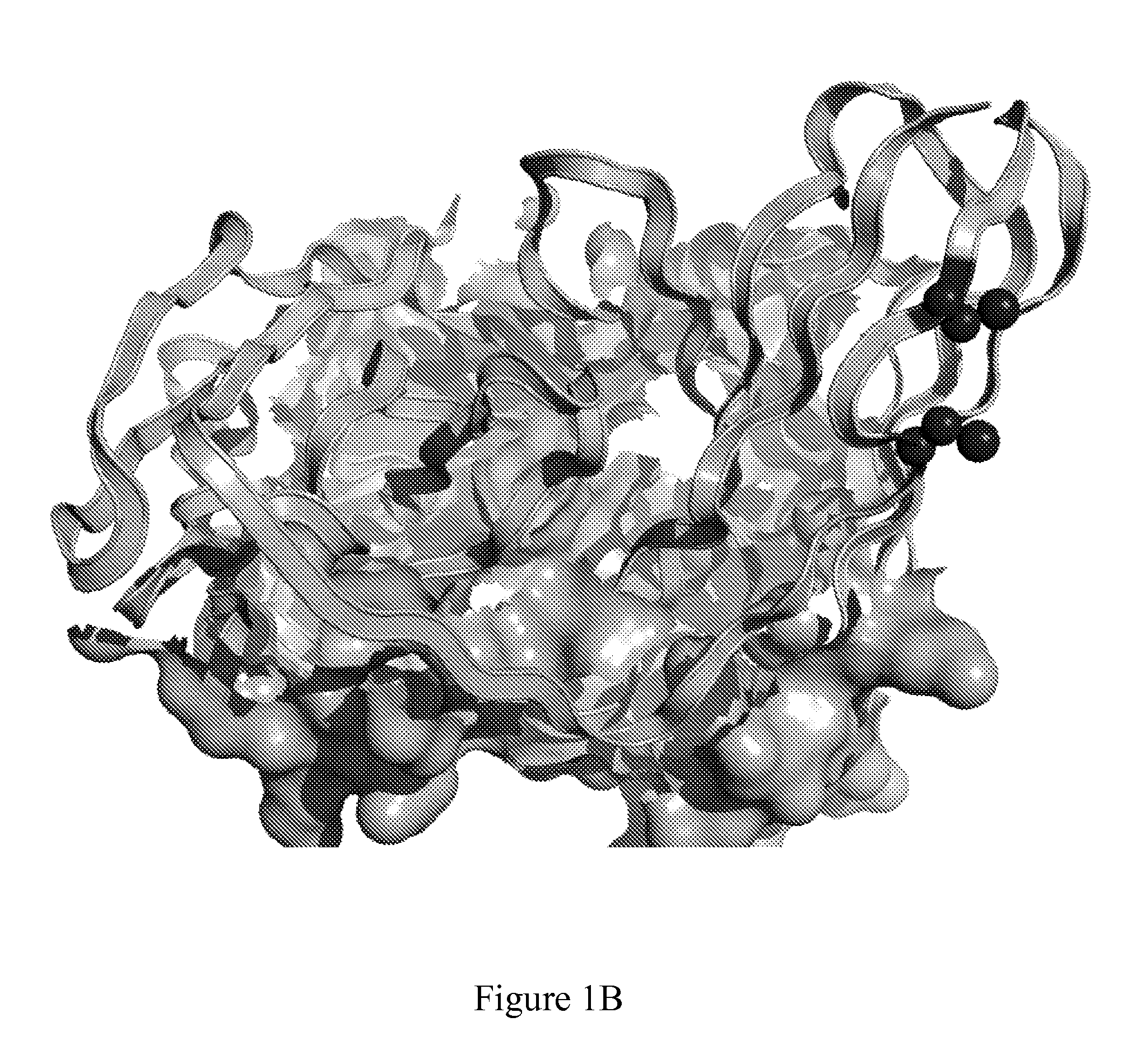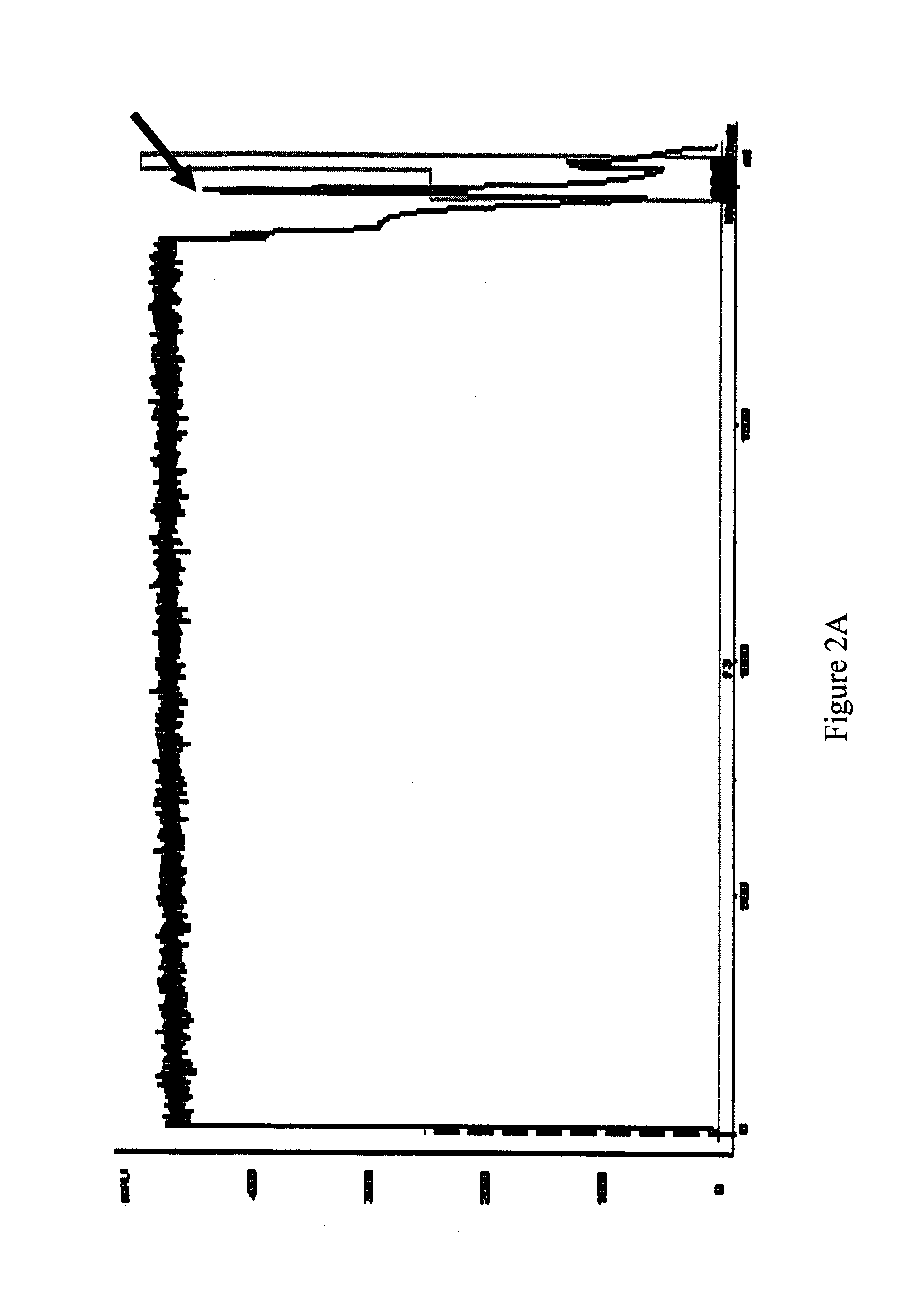Immuno-conjugates and methods for producing them
a technology of immunoglobulin and conjugates, applied in the field of proteins, can solve the problems of reducing the likelihood of linking multimers and/or aberrant folding of variable regions, and achieve the effect of reducing or preventing the bonding of residues and allowing the production and/or isolation of functional proteins
- Summary
- Abstract
- Description
- Claims
- Application Information
AI Technical Summary
Benefits of technology
Problems solved by technology
Method used
Image
Examples
example 1
Materials and Methods
1.1 Molecular Modeling and Identification of Framework 1 as Positions to Engineer Cysteine Replacement Mutations
[0647]The VH / VL interfaces of numerous diabody sequences were modeled and residues meeting the following criteria were identified:[0648]Not involved in the structural integrity of the domains and the domain-domain interfaces;[0649]Not involved in hydrophobic interactions with other amino acids;[0650]Not in the CDRs;[0651]May be in random coils, so their backbones are not involved in secondary structure motifs; and[0652]Preferably, though not necessarily, surrounded on each side by random coil residues at the surface (e.g., in the middle of unstructured loops outside the CDRs).
[0653]From this subset of residues, a disulphide bond, through the replacement of two native residues with cysteines, was engineered.
1.2 Sequence Numbering
[0654]Antibody residues are numbered according to Kabat (1987 and / or 1991).
1.3 Synthesis of Antibody VL and VH Domain Encoding...
example 2
Molecular Modelling and Identification of Framework 1 as a Suitable Position to Engineer Cysteine Replacement Mutations
[0674]In silico molecular modelling of variable chains consistently revealed residues in Framework 1 (FR1) which met the criteria outlined in Example 1. In the context of the murine kappa variable light chain containing AVP04-07 (SEQ ID NO: 59), VL residues between 8 and 11 were indicated as the most structurally suitable for cysteine replacement mutations (FIG. 1A). Furthermore, in silico molecular modelling also indicated that the introduced cysteine replacement mutations in VL framework 1 were distant in three dimensional space from the known antigen binding site of the diabody (FIG. 1B).
[0675]Similar results from molecular modelling were observed when cysteine replacement mutations in residues 8 and 12 were included in silico in the human lambda variable chain containing HER2-specific AVP07-17 diabody (SEQ ID NO: 61).
example 3
Generation of the Thiolated Diabody Genetic Constructs
[0676]Prior to introducing the in silico defined cysteine replacement mutations in the context of AVP04-07 (SEQ ID NO: 58) and AVP07-17 (SEQ ID NO: 60), the codon encoding the native N-terminal residue was replaced in each case with a codon encoding a serine residue, forming new genetic constructs. From these new genetic constructs, the cysteine replacement mutations were introduced into AVP04-07, forming the genetic construct set forth in SEQ ID NO: 154. In the case of AVP07-17, a further modification was made (SEQ ID NO: 64) prior to inserting the cysteine replacement mutations to form the construct comprising the sequence set forth in SEQ ID NO: 156. The genetic sequences of all constructs were validated as outlined in Example 1 prior to subcloning into the BL21 expression bacterial strain for downstream processing, e.g., expression and / or purification and / or analysis.
PUM
| Property | Measurement | Unit |
|---|---|---|
| pH | aaaaa | aaaaa |
| pH | aaaaa | aaaaa |
| polydispersity index | aaaaa | aaaaa |
Abstract
Description
Claims
Application Information
 Login to View More
Login to View More - R&D
- Intellectual Property
- Life Sciences
- Materials
- Tech Scout
- Unparalleled Data Quality
- Higher Quality Content
- 60% Fewer Hallucinations
Browse by: Latest US Patents, China's latest patents, Technical Efficacy Thesaurus, Application Domain, Technology Topic, Popular Technical Reports.
© 2025 PatSnap. All rights reserved.Legal|Privacy policy|Modern Slavery Act Transparency Statement|Sitemap|About US| Contact US: help@patsnap.com



